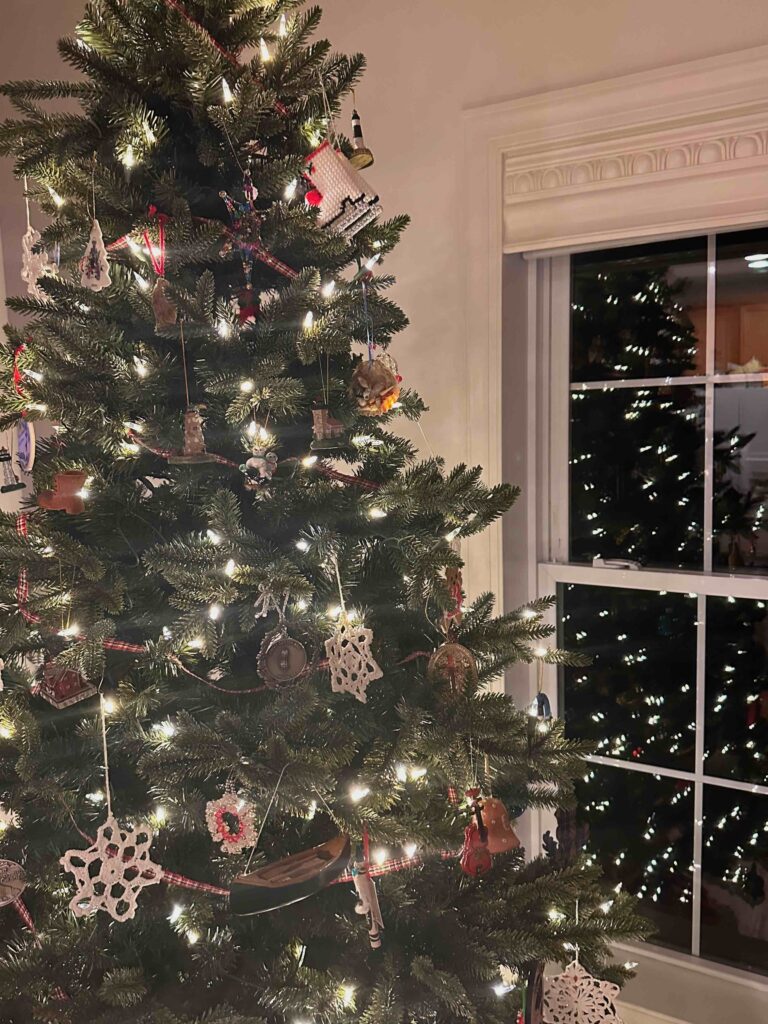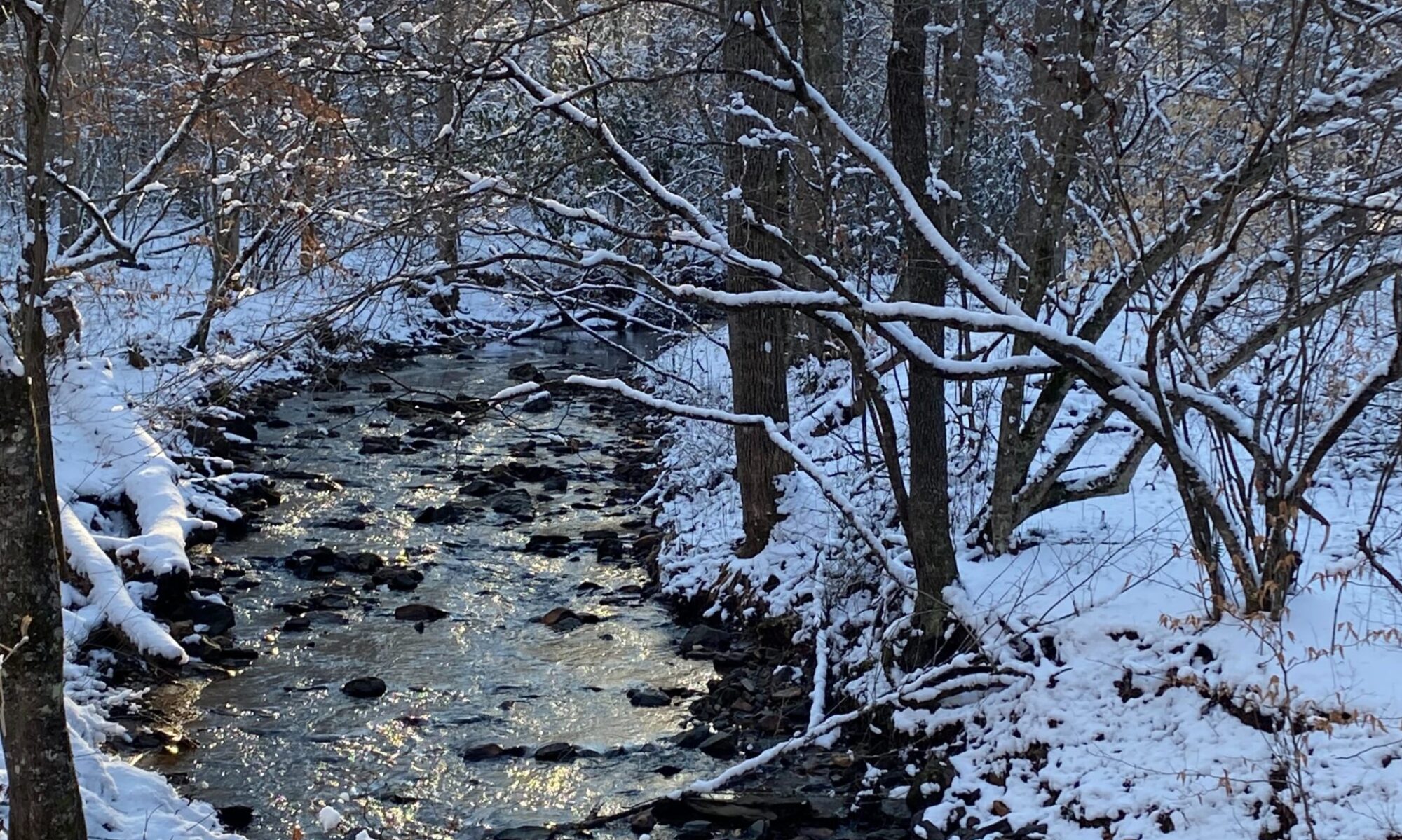Jeff Garrison
Bluemont and Mayberry Churches
December 4, 2022, Advent 2
Isaiah 11:1-10
At the beginning of worship:
I can’t imagine what these mountains where we live looked like at the beginning of the 20th Century. In the mix of the trees were chestnuts, giants that grew straight. Chestnuts provided not only strong and rot-resistant wood for building, but they also gave an abundance of nuts. Our pioneer ancestors would gather them for eating. Furthermore, they were a cash crop that could be sold to supplement one’s livelihood. By the mid 1920s, long before any of us were here, they were gone.
A fungus introduced in the United States in 1904, when some Asian chestnuts were brought to New York, spread into the American chestnut population. An estimate of 4 billion chestnuts trees died in the Appalachian Mountains alone. It is thought that one in every four hardwoods died. But still, in places, from old chestnut stumps, new growth sprouts. The sprout grows tall and straight. It looks promising. But before it matures, it too succumbs to the blight. Hopefully, one day, scientists can find a way for these trees to dominate the landscape once again.
A shoot for a stump
A shoot coming up from the roots of a dead tree is a sign of hope, as we’re going to see in text today. Advent is a season in which we are reminded that we live in a world that’s not our home. Our world is like a stump, in need of new life. We long for a better home, which will require God’s invention. God can do things that has mostly alluded scientist for the past 100 years—giving growth that continues from a stump that appears dead. As followers of Jesus, hold on to this hope.
Before the reading of Scripture
Today, I’m going to read two passages of scripture for the sermon. The first is from Matthew’s gospel, in which we hear that madman John the Baptist rail against the people of his day. John knew something was happening and he wanted people to prepare by repenting and changing their ways. John speaks to our world today, and the need we have to prepare ourselves for God’s coming. I’m not going to say much about John in the sermon, but let’s hear his words and be reminded of the type of world in which we live. Are any of us fully content here? I hope not. I hope we long for a better world.
We get a glimpse of this better world my second reading from Isaiah. We hear of a shoot growing from a stump and catch a vision of life as God intends.
Read Matthew 3:1-12 and Isaiah 11:1-10
Edward Hicks
You know, sometimes artists appear to be in a rut. Think of Monet and his 250-some paintings of water lilies. Another such painter is Edward Hicks, a 19th Century Pennsylvanian artist whose favorite subject was “The Peaceful Kingdom.” Hicks painted an untold number of canvases that depict the scene we just heard from Isaiah. All the animals are at peace: predators and prey, along with children and snakes. The National Galley in Washington, DC have several of Hick’s paintings. If you are there, check them out. While you can look at his paintings in a book or on the internet, there is something about seeing it in person.
Hicks’ mother died when he was 18 months old. Being unable to care for him, his father shipped him off to friends who raised him. Then he moved into a coach makers home, where he worked as an apprentice. He became known for his illustrations on the side of the horse drawn carriages he painted. This resulted in people asking him to paint furniture and signs. He was later given commissions for paintings to decorate walls.
Depicting Biblical Scene
Hicks joined the Quaker Church. This created a tension with his art because Quakers were plain folk who shunned art for art’s sake. He then began to use art to interpret scripture, especially the peacefulness sought by Quakers. This is when he began his lifelong obsession with “The Peaceful Kingdom.”[1] I wonder if Monet and his waterlilies and Hicks and his peaceful kingdom were attempts to get it right. By painting the same scenes over and over, were they striving for perfection? It will take a lot of work to achieve such a kingdom. In fact, we can’t do it ourselves. Only God can bring such a kingdom about.
The curse of Genesis 3 is remove
But just because we can’t, by ourselves, bring such a kingdom about, doesn’t mean we shouldn’t think about it. Instead, we should mediate upon it, and ponder how we might help demonstrate the kingdom to the world. In doing so, we instill hope. Our passage from Isaiah showsthat the curse of the fall, from Genesis 3, has been removed. In the curse, the woman’s and the serpent’s descendants are to be in constant battle. Humans stomp on snakes while they bite at our heels.[2]But in Isaiah, and in the paintings, a child is safe around a poisonous snake.
Now, I know my mother thoughts of heaven would be a warm place without snakes. She was afraid of them and didn’t want us to have anything to do with them. But perhaps this idea of the child and the snake being together is an example of how, in heaven, we’ll get along even with our enemies.
Animals living in harmony
Furthermore, in this scene, as I’ve said, we have the predator and the prey lying together. Woody Allen once quipped, “the day may come when the lion will lie down with the lamb, but the lamb won’t get much sleep.”[3] Like the child, the ancient enemies in this imagined world are no more. No longer do the weak have to be concerned about being consumed by the powerful. Predators and bullies and rouge nations are no more. Everyone looks out for everyone else. That’s the Christian hope. We won’t be able to do this on our own. We’ll have to depend upon God. Thankfully, we worship a God of miracles who sent his only Son into our world. And that child, born in Bethlehem, gives us a vision of the kingdom that is coming.
Two parts to this reading from Isaiah
There are two parts our reading from Isaiah. I’ve discussed the second one first. But let’s go back to that shoot growing from a stump which reminds me of the chestnut tree. The stump of Jesse represents Israel at a time when it was united between the north and the south and it’s greatest king, David, the son of Jesse, ruled. By Isaiah’s time, David had long returned to the earth. His united kingdom had split and those in the northern half were about to be consumed by the Assyrians, the raging lions as they were known, which gives us a new insight into the tamed lions in the second half of this reading.[4]
But for Isaiah and his contemporaries, with David a distant memory, things didn’t look good. And soon, things would get worse. But our God is a God of justice and miracles. God can bring a sprout out of a dead stump and send a Son to save the world.
The Almighty prepares the righteous king
God prepares the righteous king proclaimed by Isaiah with wisdom and knowledge and the fear of the Lord. He’s able to judge, not by sight or ear, but by righteousness, granting justice for the poor and oppressed. The lion that was Assyria will not always be on the prowl. The predators who bring danger, whether wild animals or unscrupulous business leaders or rouge nations, will be destroyed or tamed. And God’s king will rule fairly. But that’s still in the future.
The hope of a new world
Today, we live in the world much like that which John the Baptist condemned. But it won’t always be this way. Jesus has come to save us from our sin. Jesus will come again to rule. We need to prepare ourselves for what God is doing and be ready. We need to do what we can to herald the new world that’s coming. Remember, the old saying, “it’s always darkest before the dawn.” Hold tight and trust in God. Jesus has come and will come again. Have hope, as we long for the day of peace promised in Isaiah. Amen.
[1] For more about Hick’s and his paintings, see https://artandtheology.org/2016/12/06/the-peaceable-kingdoms-of-edward-hicks/
[2] Genesis 3:15. See Otto Kaiser, Isaiah 1-12: A Commentary, John Bowden translator, (Philadelphia: Westminster, 1983), 260.
[3] See Scott Hoezee, “Isaiah 11:1-10” at https://cepreaching.org/commentary/2022-11-28/isaiah-111-10-3/
[4] Christopher R. Seitz, Isaiah 1-39, Interpretation: A Bible Commentary for Teaching and Preaching (Louisville: John Knox Press, 1993), 106.


I certainly hope for a better world here and now, Jeff. It’s getting very hard to remain hopeful and positive with all that is going on in our troubled world. And I certainly hope for a better place when I leave this earth. I love your tree! I am not surprised to see a canoe and a lighthouse on it. Enjoy the season!
If you look close, you can also see a boot, that was carved by a man in Florida and sent to those who completed the Appalachian Trail.
Beautiful tree, Jeff.
Blessings and merriment to you and yours.
Virtual hugs!
Have a wonderful holiday season, Robyn!
“A shoot coming up from the roots of a dead tree is a sign of hope.” I love that. I’ve seen that in nature many times, and I’ve recognized it in my own life, too. <3
It is a wonderful image and one that offers hope. Sadly, most of the chestnut shoots die prematurely, but hopefully one day…
Wonderful post and gorgeous tree. We didn’t put one up this year, so happy to share in yours!
Trees are always necessary but are also a lot of work especially if one travels after Christmas
I’ve never eaten a chestnut, but my Chinese DIL loves them. I hope you have a blessed Advent season.
I have never had one, either. But the chestnuts available tend to be either asian or European. May you have a blessed Advent, too.
A place where everyone gets along, even enemies sounds nice.
Your Christmas tree is so pretty 🌲
Thanks, Mary. Followers of Jesus should place their hope at such a place.
Your tree looks lovely! It tickled me a little to think of Monet being “in a rut” with all his water lily paintings.
I am amazed that one person can dedicate so much of a life to one subject! Of course, as his paintings show, things are in a flux as lighting and seasons change.